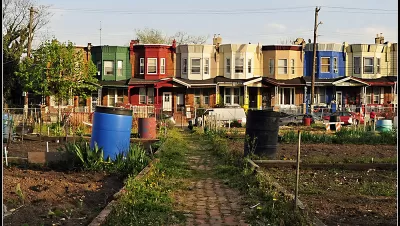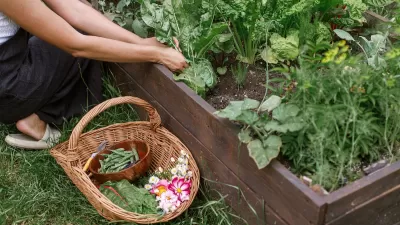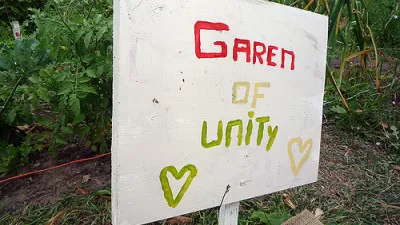New research suggests urban agriculture’s biggest yields are social, cultural, and educational.

A new report from the Johns Hopkins Center for a Livable Future clarifies the impact of urban agriculture projects.
They won't feed a city or transform the supply chain, the report says. Rather, their primary impact is at the community level, where they serve to educate, build community ties, and promote civic engagement.
Take Planting Justice, an Oakland non-profit that teaches permaculture at San Quentin State Prison, and employs recently incarcerated people to build community gardens and farms.
Willy Blackmore, food editor at Take Part, links the findings to his own observations on the social aspects of growing food in California cities. The takeaway: urban agriculture may or may not be the future of food, but done right, it can benefit communities in the here and now.
FULL STORY: Urban Agriculture Can’t Feed Us, but That Doesn’t Mean It’s a Bad Idea

Maui's Vacation Rental Debate Turns Ugly
Verbal attacks, misinformation campaigns and fistfights plague a high-stakes debate to convert thousands of vacation rentals into long-term housing.

Planetizen Federal Action Tracker
A weekly monitor of how Trump’s orders and actions are impacting planners and planning in America.

San Francisco Suspends Traffic Calming Amidst Record Deaths
Citing “a challenging fiscal landscape,” the city will cease the program on the heels of 42 traffic deaths, including 24 pedestrians.

Defunct Pittsburgh Power Plant to Become Residential Tower
A decommissioned steam heat plant will be redeveloped into almost 100 affordable housing units.

Trump Prompts Restructuring of Transportation Research Board in “Unprecedented Overreach”
The TRB has eliminated more than half of its committees including those focused on climate, equity, and cities.

Amtrak Rolls Out New Orleans to Alabama “Mardi Gras” Train
The new service will operate morning and evening departures between Mobile and New Orleans.
Urban Design for Planners 1: Software Tools
This six-course series explores essential urban design concepts using open source software and equips planners with the tools they need to participate fully in the urban design process.
Planning for Universal Design
Learn the tools for implementing Universal Design in planning regulations.
Heyer Gruel & Associates PA
JM Goldson LLC
Custer County Colorado
City of Camden Redevelopment Agency
City of Astoria
Transportation Research & Education Center (TREC) at Portland State University
Jefferson Parish Government
Camden Redevelopment Agency
City of Claremont





























